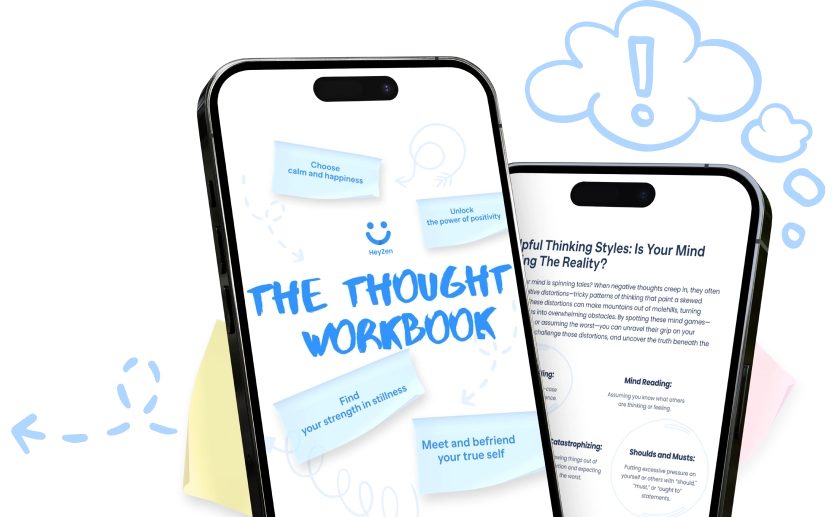Top 10 Best Meditation Apps for Focus, Relaxation, and Mindfulness

In a world of endless scrolling, notifications, and digital noise, staying focused and mindful is harder than ever. Whether you’re a social media creator, a busy entrepreneur, or simply someone trying to reduce stress, meditation apps can help you reclaim control over your mental space.
These apps make mindfulness accessible, offering guided sessions that fit seamlessly into your schedule. But not all meditation apps are created equal—some provide AI-powered personalization, while others offer bite-sized sessions for those constantly on the go. Let’s explore the best options available today.
Top 10 Best Meditation Apps Overview
| App Name | Best For | Key Features |
| HeyZen | Personalized mindfulness | AI-driven guided meditations |
| Headspace | Beginners & structured routines | Playful UI, structured courses |
| Calm | Sleep & relaxation | Sleep stories, celebrity narrations |
| Insight Timer | Free meditation library | Thousands of free guided sessions |
| Balance | Adaptive meditation | AI-powered personalized practice |
| Ten Percent Happier | Meditation skeptics | Practical, science-backed guidance |
| Simple Habit | Busy professionals | 5-minute meditations for quick relief |
| Waking Up | Deep thinkers | Philosophy-driven mindfulness |
| Breethe | All-in-one self-care | Meditation, sleep therapy, life coaching |
| Aura | AI-driven personalization | Mood-based recommendations |
What Makes a Great Meditation App?
Choosing the right meditation app depends on your goals. Here are the key factors that make an app truly great:
- Personalization: AI-driven recommendations that adapt to your emotions and meditation history.
- Ease of Use: A smooth, intuitive design that makes it easy to integrate mindfulness into your daily routine.
- Variety of Sessions: Options for focus, stress relief, better sleep, and productivity.
- Science-Backed Techniques: Mindfulness strategies rooted in psychology and neuroscience.
- Affordability & Accessibility: Free content or affordable premium options.
Top 10 Best Meditation Apps
1. HeyZen – AI-Powered Mindfulness for Your Unique Needs
Best for: Personalized meditation based on your mental state.
HeyZen stands out by using AI to curate guided meditations tailored to your current emotions and stress levels. Unlike static meditation apps, it evolves with you, offering dynamic content that aligns with your needs—whether it’s focus, relaxation, or sleep.
2. Headspace – The Fun and Structured Approach to Meditation
Best for: Beginners and structured mindfulness routines.
Headspace’s playful design and well-structured courses make meditation easy to adopt. The app offers daily sessions, sleep sounds, and quick exercises for busy users.
3. Calm – The Go-To App for Sleep and Relaxation
Best for: Improving sleep quality and stress reduction.
With celebrity-narrated sleep stories, relaxing nature sounds, and guided sessions, Calm is perfect for those who struggle with anxiety and insomnia.
4. Insight Timer – The Best Free Meditation Library
Best for: Users looking for high-quality free content.
With thousands of guided meditations and live mindfulness events, Insight Timer offers one of the most extensive free collections available.
5. Balance – The AI-Powered Personal Coach for Meditation
Best for: Adaptive meditation that evolves with your needs.
Balance adjusts your meditation journey based on your progress, offering personalized recommendations for mindfulness exercises.
6. Ten Percent Happier – Meditation for Skeptics and Realists
Best for: Those who want a science-backed, no-fluff approach.
Created by a journalist-turned-meditation-advocate, this app offers practical guidance without unnecessary mysticism.
7. Simple Habit – Quick and Effective Mindfulness for Busy People
Best for: Professionals and social media creators with packed schedules.
With five-minute meditations tailored for stress, focus, or relaxation, Simple Habit is designed for those who want results without long commitments.
8. Waking Up – A Philosophical Approach to Meditation
Best for: Deep thinkers and those looking for mindfulness beyond relaxation.
Founded by neuroscientist Sam Harris, this app blends meditation with philosophy and self-inquiry.
9. Breethe – The All-in-One Self-Care Companion
Best for: Users looking for guided meditation, life coaching, and sleep therapy.
Breethe offers a full ecosystem of self-care, including meditations, hypnotherapy, and bedtime stories.
10. Aura – AI-Driven Mindfulness for Personalized Meditation
Best for: People who want bite-sized, AI-recommended sessions.
Aura learns from your mood and behavior, delivering short, effective mindfulness exercises tailored to your needs.
How to Choose the Right Meditation App for You
Finding the perfect meditation app depends on your lifestyle and goals. Ask yourself:
✅ Do you need structured courses or prefer self-guided meditation?
✅ Are you looking for stress relief, better sleep, or enhanced focus?
✅ Do you prefer AI-driven personalization or a library of traditional meditations?
✅ Are you willing to pay for premium content, or do you need a free solution?
If you’re a creator or social media user struggling with focus, try HeyZen, Simple Habit, or Ten Percent Happier. If sleep is your main concern, Calm or Breethe might be the best choice.
Final Thoughts: Finding Zen in the Digital Age
Meditation is no longer reserved for monks or yogis—it’s a powerful tool for everyone, especially in our hyperconnected world. Whether you need to boost creativity, reduce stress, or simply get better sleep, the right meditation app can make a huge difference.
Start small, explore different options, and most importantly, stay consistent. The key to mindfulness isn’t just finding the right app—it’s making it a habit. 🚀








